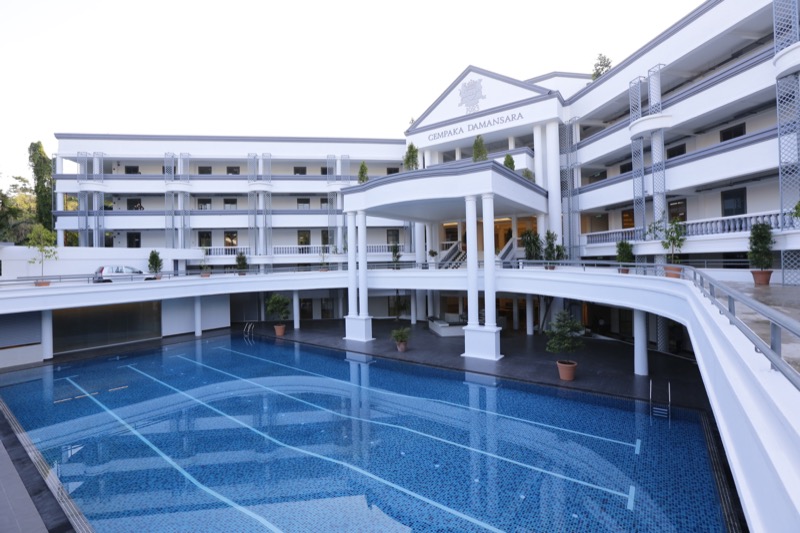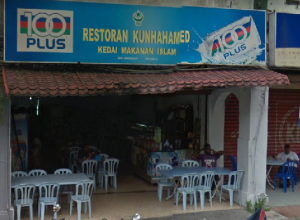7 things I learned switching from a Kebangsaan to an International school

- 11.9KShares
- Facebook10.3K
- Twitter91
- LinkedIn223
- Email230
- WhatsApp958
Like many other Malaysians out there, I grew up in a Kebangsaan primary school. Being 7 years old when it all began, this choice wasn’t mine of course – it was my parent’s who wanted me to grow up in a diverse environment. It was all well and good, until I was done with my UPSR and was in search of a secondary school.
At this point, cluster schools (a.k.a. a brand given to schools where students excel in academics, extra-curricular and sports) were gaining much popularity for being pretty kickass all around. Although I tried to apply, it was tougher than getting into Stanford as I got rejected. Instead, I got accepted to another Kebangsaan school.
So we tried that at first, but like certain parents, my mom was unhappy with the inefficiency of the teachers and the low standard of English being taught. So, after six years at a Kebangsaan school, my mum decided to move me to… an international school!
Now, I’m sure you guys have heard a LOT about international schools. So did I! I came in with all sorts of assumptions, and yet I didn’t know what to expect. Two words: CULTURE. SHOCK.
Here are 7 things I learned in my experience:
1. Malaysia has international schools for atas people… and not-so-atas people

When my mum enrolled me at an international school, I thought there’d be swimming pools, a field and a gym. Guess what – my school had none of those. We only had a basketball and a futsal court to play sports. The facilities were almost the same as my Kebangsaan school, except we had air cond and the toilet didn’t have sanitary pads stuck on the wall. Yay!
What kind of international school is this lah?
Turns out, in today’s day and age, there are actually different international schools in Malaysia. See, international schools in Malaysia have increased by 65% since 2010. Because there are SOOO many international schools, school fees range from affordable to SUPER EXPENSIVE! Therefore facilities and subjects offered vary with the amount of money paid; the higher the school fees, the better the facilities.
Let’s take a look at some examples.
An atas international school would be schools like Alice Smith International School, Mont Kiara International School, and British International School of Kuala Lumpur. Here’s how Alice Smith charges for ONE term. (One term = the time when classes are being conducted at schools. There are three terms per year in Alice Smith.)

Imagine that much money, being paid 3 times a year! This doesn’t include other additional costs! For a Year 10 student (15-16 years old), at Alice Smith you’d have to pay around RM88,350 a year! That’s about the price of a Honda Jazz!
Let’s look at a mid-level international school instead. Some of these schools include Sri Emas International School, Sri Kuala Lumpur and Cempaka International School. Here’s how much Sri Emas charges:

In comparison to Alice Smith, Sri Emas would only cost RM31,200 for the entire year for a Year 10 student (not including other additional costs). So that’s like a Perodua Axia.
Just for fun, let’s see how these both compare to Kebangsaan schools:

Minus additional costs, school fees are practically the price of air!
Anyway, we digress. If the rich kids go to atas international schools, WHO actually goes to not-so-atas international schools? Well…
2. Mana ade Mat Salleh? 95% of students were Malaysians!

Going to an international school, I expected to see at least 1 ang moh student. At my school though, I only saw Malaysian specifically Malaysian Chinese students. I found out later on, our only foreign students were 10 Koreans!
Since the 1970’s, international schools have always been for children whose parents were diplomat or expats. Before 2010, only 40% of local students were allowed to study at international schools. To make Malaysia an education hub, the government removed the quota and local students started increasing at international schools.
In fact, Malaysia has the highest number of local students at international schools in Southeast Asia. Why are Malaysian parents sending their children to international schools?
Well there are a lot of reasons, but here are some common ones. Some parents feel that the government school’s syllabus aren’t good enough. The most common reason would be the lack of emphasis on the English language. Most kids in primary school now study Maths and Science in Malay. Parents are concerned that if they choose to study overseas, they aren’t able to keep up.
Anyway, even though our parents forked out a lot more money to send us to international schools…
3. A lot of us really aren’t spoiled brats. Really wan.

Everyday, my parents gave me RM7 as my lunch money. When I asked around the CILISOS office, most of them received about the same amount or slightly less, even though they went to Kebangsaan or SJK schools!
Anyway, with only RM7, I could only buy chap fan or mi soup at the school canteen. If I ever felt like eating western food (which costs RM 11), I’d split with my friend.
Despite our parents driving BMW’s and Audi’s, we are still very kedekut with our money. Why? My mum raised me to always spend money carefully, to save when you can. So every morning, my friends and I would walk from school to the mamak in front and tapau two roti canais and share a maggi goreng. We only had to pay RM4 and still have money to save.
I had a friend whose parents own 4 cars – a Mercedes, a BMW, an Audi and a Honda. When she wanted to buy an iPhone 7, she skipped lunch everyday until she could get enough money. Instead of starving herself, why didn’t she ask her parents for money? She told me her parents were already paying a lot for the school fees so she didn’t wanna burden them. See, not that bad la after all?
4. Students and teachers have piercings, tattoos, and pink hair?

On my first day of school, I asked my school’s admin for directions to my class. When I saw his left arm, it was covered with tattoos! That’s not at all a common sight in Kebangsaan schools. Apparently, we students were allowed to do that as well. Students dyed their hair all colours of the rainbow. In fact, one guy in my class had a tongue piercing.
And unlike Kebangsaan uniforms, ours weren’t the typical blue pinafore: on certain days, we wore the school’s polo tee (un-tucked) with pants or skirts (any length we wanted). On other days, we’d wear pretty much whatever we wanted.
It was kind of weird to have that much of freedom coz Kebangsaan schools have SO many rules. While I did like my Kebangsaan school, it felt like a PRISON with too many rules and strict teachers. I didn’t like having to stand up every morning and have the pengawas check our clothes and nails. If our nails were too long, we’d kena rotan on our hand or cubit on our ears.
As a child, being caned sucked coz firstly, it hurts like hell and secondly, it’s humiliating getting caned in front of everyone. When I was at my Kebangsaan school, although teachers didn’t cane often, they’d hit, slap or pinch you. At international schools however, teachers aren’t even allowed to touch you if you don’t allow it.
So, how do teachers control the students then?
At my school, we had CCTVs, so students hardly ever stole, bullied or did anything that wasn’t allowed coz they know they’re being watched. Usually teachers would talk to you if you did anything wrong. Was this method effective though?
“Caning not only results in physical pain but will leave behind emotional scars, especially in the case of children who are beaten frequently. The ill effects will linger even when they become adults and have families of their own” – Universiti Malaya Specialist Centre Consultant Psychiatrist, Dr Muhamad Muhsin Ahmad Zahari.
It’s been said that it can also influence young kids, as it may teach them to use violence in the future to solve problems. Even the UN considers corporal punishments to be inhumane! The good news is that many people are offering alternatives to corporal punishments. Regardless, it’s just really nice la not to worry about getting caned.
Another weird thing I encountered when I went to my high school was this:
5. Instead of focusing on Pemahaman, we’re doing… Tai Chi?!

Now, most students at my school came from either Kebangsaan or Chinese schools where we really focused on exams. Because of that, we didn’t really put in enough effort in our coursework.
Wait. ‘Coursework’? What’s that?
Well it’s basically like a project that we have to research on and present at the end of a certain period. Think of stuff like starting an online business, acting in plays and building a rocket. In fact, it can even be an activity, like doing Tai Chi for our Biology class!
As I mentioned earlier, we found coursework to be a waste of time and would just finish it quickly. But our teachers kept on nagging and lecturing us to put in more effort. For me, I soon saw the importance of it all.
Firstly, it made up half of our final grades (which is a lot!!) and helped us prepare better for university. In the U.K, many new universities have a lot of courses which are 90-100% coursework-based. Even with universities that still have exams, they only contribute 20-30% of the final grades. When it comes to examiners who are marking students’ test papers, more often that not, their marking can sometimes be very cincai.
When I was at my Kebangsaan school, the only course work we did were for Pendidikan Moral and those were completely useless. As for someone who plans to study in the U.S, after doing so many course work at my international school, I feel like I’m more prepared.
But it’s not like we don’t have exams la. It takes up the other half of our final grades, so that’s why…
6. … a lot of us still go for tuition 

Ha! Caught you there didn’t I. Yes, international school kids also rely on tuition centres to help us get As in our exams. We don’t follow the same syllabus as government schools (e.g. PT3, SPM), but we pick from a variety of international syllabi (e.g. IGCSE, GCE O Levels, American curriculum)
Anyway, in my first Add Maths test, I got an F. But to be fair, so did most of the class. So no big deal.
Midterms…. also an F. Starting to FREAK OUT.
Until the start of Year 11 (form 5), I kept on failing. It was terrible! Most of my classmates blamed my teacher for not teaching better, but I wasn’t sure my failing was coz my teacher sucked or I sucked. But whatever the reason was, I couldn’t bear the shame of having an F on my IGCSE cert.
I asked my friend who was passing add maths, how did she do it? She told me she took tuition classes. After asking everyone, apparently half of the class took tuition classes! This was shocking for me coz I thought only students from government schools depended on it. But even at international schools, when our grades aren’t an A we turn to tuition to save us.
But be warned – tuition for international school students are more expensive than for the local syllabus. For my 1-on-1 add maths tuition, it cost RM120 for every one and a half hour class. In comparison, the same tuition package for SPM Add Maths would only cost RM55 – RM65.
Apart from needing tuition classes, there’s one more similarity that we have…
7. There is still a bit of racial divide
In Kebangsaan school, it was a lot more diverse. Being a Malaysian Indian, I could identify myself easier coz there were more of us. However, most of the students in my international school were Malaysian Chinese, so the feeling of being a minority greatly intensified.
My classmates are great – they don’t bully me, we get along very well. But a lot of them speak in Mandarin instead of English, so that makes me the odd one out sometimes. There was even once when someone even said something untruthful about me in Mandarin, right in front of my face!
Once, my friend (also Malaysian Indian like myself) temaned me to get my phone from my ICT teacher. When he saw us together he asked “Are you sisters?” I obviously had to tell him, “Just coz we’re Indians doesn’t mean we’re all related.” It’s not the first time I’ve heard this, some even ask whether I’m related to my teachers. Like what? That is something white people do.

But truth be told, racial divisions at governments schools can be more brutal. On Facebook, you would’ve heard stories about how students are given lower grades due to their race or not allowed to drink from the same cup due to different religion.
Thing is, wherever you go, you can’t guarantee that people won’t be racist, it doesn’t matter whether it’s an international or kebangsaan school.
Which brings us to the question…..
So which is better, kebangsaan or international?

That would be the most common question that I’ve been asked.
The truth is for me, I felt that they were almost the same. Most of the students at my school came from government schools and experienced the Malaysian school culture which we brought with us.
Both schools have helped me. While I learned discipline and competitiveness at my Kebangsaan school, I learned confidence and teamwork at my international school.
With around 170 international schools in Malaysia, there are plenty of options for Malaysians from the middle class to the richy rich families. If you’re a parent or soon to be parent, and are wondering how to choose between the two, or choosing from SOO many international schools, don’t worry.
After seeing my mum go half mad choosing which school to send me to, I’d say there isn’t a perfect school. Bad or good experiences happens everywhere, regardless where you are. You don’t need to be an international school graduate to go to Harvard, or to score your dream job.
- 11.9KShares
- Facebook10.3K
- Twitter91
- LinkedIn223
- Email230
- WhatsApp958

